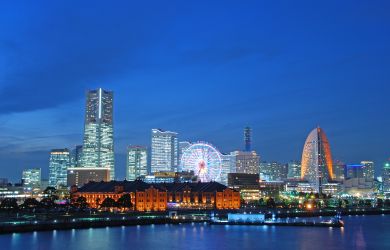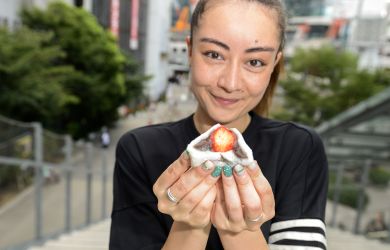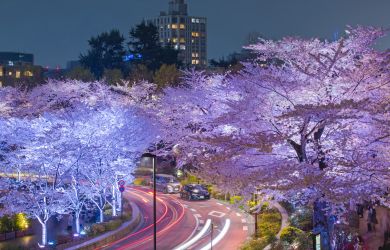
Originally published on metropolis.co.jp on October 2011
You might have noticed Tokyo turning pink this October with pink ribbons, troupes in pink t-shirts parading the streets—even Tokyo tower has been blushing. All this is for Breast Cancer Awareness Month, representing the fight against a disease that claims a life about every 15 minutes in Japan alone.
Then, come November, promotional pink cosmetics will be sold at a discount and magazine covers will abandon pink tones for the more festive, red Christmas overtures. Breast cancer will seemingly fade away: out of sight, out of mind.
Of course, for those who live with cancer—as patients, survivors, family or friends— such convenient compartmentalization is not an option: “Sadly, it is not written or talked about much during any other month of the year,” says Vickie Paradise-Green, founder of the charity Run for the Cure Foundation—and a cancer survivor.
In Japan, one in 20 women between the ages of 25 and 55 are diagnosed with breast cancer. Although lower than in the US or Europe, the country has one of the highest growth rates of incidences in the world, affecting a younger age bracket.
Scientists have linked breast cancer to a diet rich in animal fats and dairy, and in the last decade or so this Western diet has for many—particularly those of a younger generation—replaced the traditional Japanese mainstay of rice and vegetables. Where once Japan could lay claim to one of the lowest incidence rates in the world, the sharp rise in recent years has caught the country woefully short of a medical infrastructure and the expertise to support it. Meanwhile, little effort has been made by the government to address the issue.

“Fewer than 12% of Japanese women have an annual mammogram,” comments Vickie, whose organization raises funding to help more women gain free or affordable access to this crucial screening. “Breast reconstruction is not an option because it—along with mammography screening—is not covered by national health insurance, and it is too expensive for the average family.”
The tragic outcome is that many women here are diagnosed—and treated—too late, making breast cancer the number-one killer cancer in Japan. This is something the Foundation strives to change, with the invaluable support of the foreign business community.
Throughout the year, the Foundation holds events to fund their tireless work, including the annual 5km (or 10km) run or walk around the Imperial Palace on November 26, and the legendary Pink Ball on February 26, which will once again feature top-class entertainment in the hope of exceeding 2010’s tally of ¥15.3 million raised.
This figure is a great achievement but clearly does not cover the vast cost of bringing the medical system here up to the standards so desperately needed. In the meantime, the message is clear: early diagnosis saves lives. Even men are not immune. Do not wait for physical symptoms; get checked out regularly and if you are not convinced—get a second opinion. Doctors are not infallible and little can be told without a mammogram or an MRI.
So once October has drawn to a close, don’t box it up and store the pink month for another year. Remember that for millions, life is, and remains, pink.
- To take part in the Nov 26 run, the Feb 26 Pink Ball, or to contribute to the Foundation, see www.runforthecure.org.
- English-speaking patients and survivors can contact support group Tokyo Bosom Buddies, tbb@runforthecure.org.
- The fee for this article has been donated to Run for the Cure Foundation.
- See listings for info on a free mammogram.






